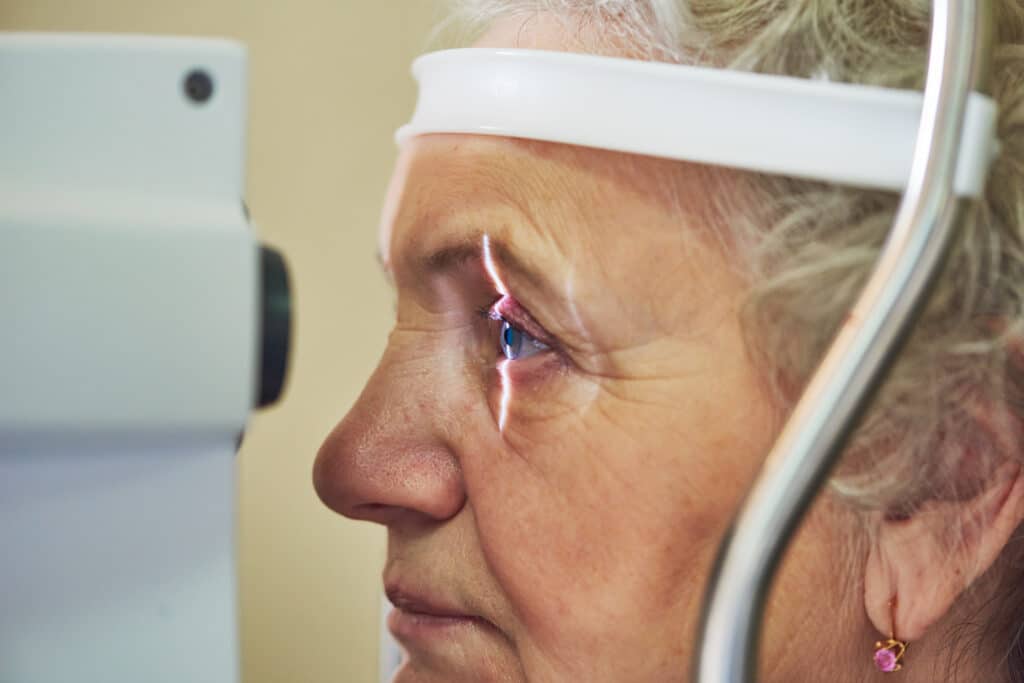The Limitations of LASIK
August 4, 2020
LASIK (laser-assisted in situ keratomileusis) is a time-tested refractive surgery that has improved the vision and quality of life for more than 40 million people globally since 1991. LASIK utilizes a laser to reshape the eye’s cornea to correct refractive error. With this method visual acuity can be drastically improved, with some results exceeding 20/20 vision. Still, LASIK surgery is not for everyone and there are some limitations associated with the procedure.

What Are Prevalent LASIK Limitations?
When it comes to LASIK safety and effectiveness, there are some instances where the physical structure or the health of the eye may prevent LASIK from being a viable refractive surgery option. Luckily, each patient will meet with an eye surgeon (Ophthalmologist) prior to undergoing surgery. The Ophthalmologist will perform a thorough eye exam to determine the ocular health and to understand the specific dimensions of the eye. The results of this initial exam will help determine if there are any issues that may hinder an effective LASIK operation or approve their eligibility. Some of the prevalent issues include:
- Corneal Thickness: To effectively perform LASIK, the cornea needs to thick enough to hold its shape following surgery. Normal corneal thickness is approximately 540 microns (half of a millimeter). The average range of corneal thickness is between 495-600. In order for the LASIK treatment to reliably correct the vision long term, the cornea must retain 275-300 microns after the subtracting the depth of the flap and the depth of the treatment. The flap is usually 100-120 microns. The tissue used by the treatment for LASIK flap varies depending on the prescription being treated (approximately 12 microns per diopter). Once the flap and treatment have been subtracted from the initial thickness of the cornea, the residual “Corneal Bed” must be at least 275-300 microns.
- Corneal Curvature: If a patient’s cornea is too steep or too flat, it can be a limiting factor for proceeding with LASIK surgery. LASIK surgery corrects the vision by steepening the cornea or flattening it, depending on which prescription it is being used to correct. Myopia is corrected by flattening the cornea. Hyperopia is used to steepen the cornea. A healthy cornea is between 34-48 diopters. If the cornea is steepened or flattened more than this, there may be issues.
- Steep Cornea:
- A steep cornea may be an indication of underlying pathology such as a weak cornea or keratoconus. In these instances LASIK is avoided because it will weaken the cornea further.
- LASIK is avoided in some patients if the cornea will be steepened >48 diopters by the treatment. This is because ocular irritation and dryness are more prevalent when the corneas is steepened to this level.
- Flat Cornea:
- LASIK is avoided in some patients if the cornea will be flattened to <34 diopters by the treatment. This is because when the corneal surface becomes flatter, people are more likely to notice visual disturbances such as halos around lights.
- Steep Cornea:
- Corneal Pathology: Corneal screening during the initial eye examination could reveal Keratoconus – a corneal condition where the tissue is inherently weak. If LASIK were to be performed on such a cornea, it could further weaken it and cause complications that may result in optical distortions and a decrease of vision. Thankfully, this issue is almost always discovered prior to surgery.
- Presbyopia: As we age, the natural lens in the eye loses elasticity and its ability to focus declines. This results in presbyopia, also known as age-related farsightedness. LASIK corrects vision by reshaping the cornea, and it is unable to reverse the physiologic changes happening in the lens which cause presbyopia. However, the effects of presbyopia can be addressed by performing blended vision with LASIK.
- Large Pupils: While the average pupil poses no problem for LASIK, large pupils or pupils that are heavily dilated in the dark can cause side effects with glare after LASIK. This is related to the way the laser shapes the cornea.
The Path to Clearer Vision Starts Here
Can LASIK Fix Really Bad Vision?
LASIK is an option for those with significantly impaired vision, but there are limitations. When significant correction is needed, excessive flattening of the cornea can occur which may result in increased instances and issues with glare and halo side effects after surgery. These cases are also more difficult to achieve results of 20/20 vision. Because of these reasons, those with hyperopia (farsightedness) of more than plus-6 diopters, myopia (nearsightedness) exceeding minus-12 diopters, or astigmatism exceeding 6 diopters are discouraged from undergoing LASIK. These patients may achieve better results with RLE or ICL.
Who Is Not Suitable for Laser Eye Surgery?
In addition to the circumstances above that would prevent a patient from undergoing LASIK eye surgery there are a variety of other factors that could disqualify a person from undergoing the procedure.
- Too young / unstable vision: As a general rule, patients need to be at least 18 years old before they can have LASIK eye surgery. This is because it is uncertain that a patient’s eyes are truly stabilized until this point. If a patient’s prescription has been changing year over year, and they are constantly needing to get updates to their glasses and contacts, then they are not quite ready to move forward with LASIK surgery. This is important because if the vision is still changing, those natural changes could continue after LASIK surgery was performed – further affecting their vision and impacting the long-term effectiveness of the procedure. It is recommended that the prescription has stabilized for at least a year before considering LASIK to correct the refractive error. Until then, contact lenses and eyeglasses should be their primary form of vision correction.
- Presence of eye disease or adverse eye conditions: Eye health is an important factor for those considering LASIK. Viable candidates for this refractive surgery should have no eye diseases. This includes severe cataracts, uncontrolled glaucoma, keratoconus, corneal disease, as well as certain optic nerve and retinal diseases. Patients also should not have issues with current or recurring eye infections, ocular herpes, autoimmune eye disease or optic neuritis.
- Pregnant or nursing: Those who are pregnant or nursing should hold off on LASIK for now. This is because it is possible in rare cases for hormonal fluctuations to temporarily change the prescription. To ensure that LASIK surgery has the best possible long term results it is best to wait until menstruation has restarted and normalized on a monthly cycle. This is the best indication that hormone levels have stabilized and the vision along with it.
- Poor overall health: If a patient’s overall health is not stable, they may not be a suitable candidate for LASIK. Patients with active rheumatoid arthritis, or lupus bay be recommended to not have LASIK surgery. Similarly patients with uncontrolled diabetes should defer LASIK surgery until the blood sugar is controlled such that the HgA1C is <7. It is important for patients to be transparent about all medications they are taking, as some can slow or prevent healing.
Is LASIK Safe Long Term?
Yes, for the patient that meets all of the requirements for undergoing LASIK surgery it is a very safe long-term option. LASIK eliminates refractive error by reshaping the cornea, causing a permanent change in the eyes that results in much-improved vision. As mentioned before, LASIK does not protect eyes from the natural aging process, so as a patient gets older they may need reading glasses or other forms of vision correction to maintain visual acuity. This most commonly occurs after the age of 40. LASIK itself does not increase the risk for presbyopia, however.
Conclusion
Safety is the first priority with any LASIK procedure, which is why guidelines have been put in place to determine the viability of anyone interested in the surgery. While LASIK is not an option for everyone, there are often compelling alternative vision correction options that may fit the needs of those who are ineligible for LASIK. It is important for all patients to choose an eye doctor or clinic that has demonstrated a solid competency for LASIK and has years of experience with the procedure. This will ensure that preoperative exams are thorough and honest, and that their LASIK experience will be a positive one.
If you are curious about LASIK and want to see if it is a good fit for your eyes, the Heart of Texas Eye Institute is here to help. Please contact us for a free consultation to see if LASIK is right for you.


